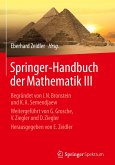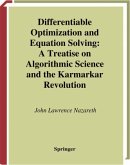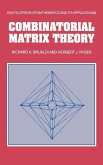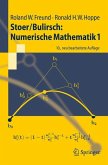The papers included in this volume provide an overview of the state of the art in approximative implicitization and various related topics, including both the theoretical basis and the existing computational techniques. The novel idea of approximate implicitization has strengthened the existing link between Computer Aided Geometric Design and classical algebraic geometry. There is a growing interest from researchers and professionals both in CAGD and Algebraic Geometry, to meet and combine knowledge and ideas, with the aim to improve the solving of industrial-type challenges, as well as to initiate new directions for basic research. This volume will support this exchange of ideas between the various communities.
This volume contains revised papers that were presented at the international workshop entitled Computational Methods for Algebraic Spline Surfaces ("COMPASS"), which was held from September 29 to October 3, 2003, at Schloß Weinberg, Kefermarkt (A- tria). The workshop was mainly devoted to approximate algebraic geometry and its - plications. The organizers wanted to emphasize the novel idea of approximate implici- zation, that has strengthened the existing link between CAD / CAGD (Computer Aided Geometric Design) and classical algebraic geometry. The existing methods for exact implicitization (i. e. , for conversion from the parametric to an implicit representation of a curve or surface) require exact arithmetic and are too slow and too expensive for industrial use. Thus the duality of an implicit representation and a parametric repres- tation is only used for low degree algebraic surfaces such as planes, spheres, cylinders, cones and toroidal surfaces. On the other hand, this duality is a very useful tool for - veloping ef?cient algorithms. Approximate implicitization makes this duality available for general curves and surfaces. The traditional exact implicitization of parametric surfaces produce global rep- sentations, which are exact everywhere. The surface patches used in CAD, however, are always de?ned within a small box only; they are obtained for a bounded parameter domain (typically a rectangle, or - in the case of "trimmed" surface patches - a subset of a rectangle). Consequently, a globally exact representation is not really needed in practice.
This volume contains revised papers that were presented at the international workshop entitled Computational Methods for Algebraic Spline Surfaces ("COMPASS"), which was held from September 29 to October 3, 2003, at Schloß Weinberg, Kefermarkt (A- tria). The workshop was mainly devoted to approximate algebraic geometry and its - plications. The organizers wanted to emphasize the novel idea of approximate implici- zation, that has strengthened the existing link between CAD / CAGD (Computer Aided Geometric Design) and classical algebraic geometry. The existing methods for exact implicitization (i. e. , for conversion from the parametric to an implicit representation of a curve or surface) require exact arithmetic and are too slow and too expensive for industrial use. Thus the duality of an implicit representation and a parametric repres- tation is only used for low degree algebraic surfaces such as planes, spheres, cylinders, cones and toroidal surfaces. On the other hand, this duality is a very useful tool for - veloping ef?cient algorithms. Approximate implicitization makes this duality available for general curves and surfaces. The traditional exact implicitization of parametric surfaces produce global rep- sentations, which are exact everywhere. The surface patches used in CAD, however, are always de?ned within a small box only; they are obtained for a bounded parameter domain (typically a rectangle, or - in the case of "trimmed" surface patches - a subset of a rectangle). Consequently, a globally exact representation is not really needed in practice.







